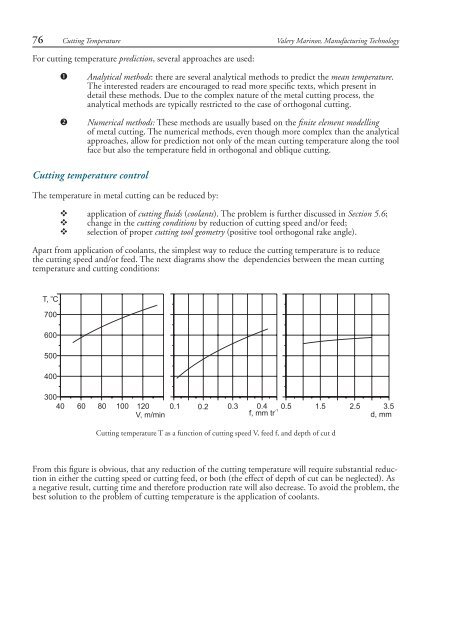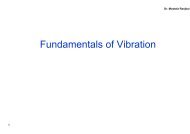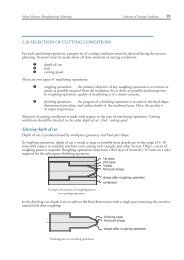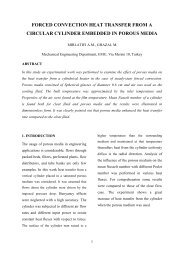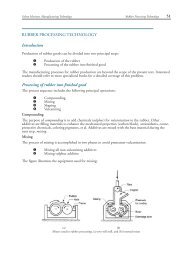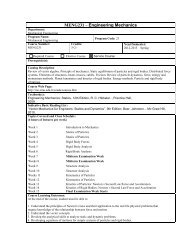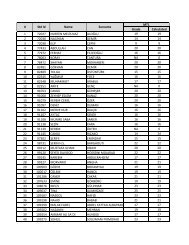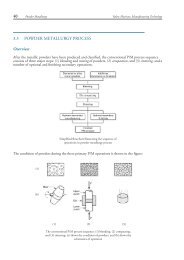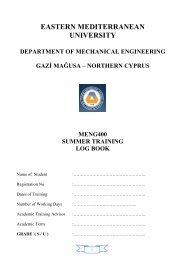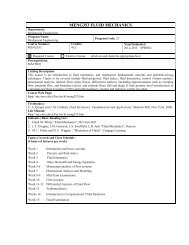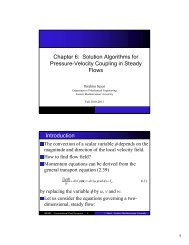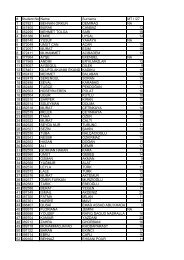5.4 Cutting Temperature
5.4 Cutting Temperature
5.4 Cutting Temperature
You also want an ePaper? Increase the reach of your titles
YUMPU automatically turns print PDFs into web optimized ePapers that Google loves.
76 <strong>Cutting</strong> <strong>Temperature</strong><br />
Valery Marinov, Manufacturing Technology<br />
For cutting temperature prediction, several approaches are used:<br />
<br />
<br />
Analytical methods: there are several analytical methods to predict the mean temperature.<br />
The interested readers are encouraged to read more specific texts, which present in<br />
detail these methods. Due to the complex nature of the metal cutting process, the<br />
analytical methods are typically restricted to the case of orthogonal cutting.<br />
Numerical methods: These methods are usually based on the finite element modelling<br />
of metal cutting. The numerical methods, even though more complex than the analytical<br />
approaches, allow for prediction not only of the mean cutting temperature along the tool<br />
face but also the temperature field in orthogonal and oblique cutting.<br />
<strong>Cutting</strong> temperature control<br />
The temperature in metal cutting can be reduced by:<br />
v application of cutting fluids (coolants). The problem is further discussed in Section 5.6;<br />
v change in the cutting conditions by reduction of cutting speed and/or feed;<br />
v selection of proper cutting tool geometry (positive tool orthogonal rake angle).<br />
Apart from application of coolants, the simplest way to reduce the cutting temperature is to reduce<br />
the cutting speed and/or feed. The next diagrams show the dependencies between the mean cutting<br />
temperature and cutting conditions:<br />
T, C<br />
700<br />
600<br />
500<br />
400<br />
o 40 60 80 100<br />
300<br />
120 0.1 0.2 0.3 0.4 0.5 1.5 2.5 3.5<br />
V, m/min<br />
f, mm tr -1<br />
d, mm<br />
<strong>Cutting</strong> temperature T as a function of cutting speed V, feed f, and depth of cut d<br />
From this figure is obvious, that any reduction of the cutting temperature will require substantial reduction<br />
in either the cutting speed or cutting feed, or both (the effect of depth of cut can be neglected). As<br />
a negative result, cutting time and therefore production rate will also decrease. To avoid the problem, the<br />
best solution to the problem of cutting temperature is the application of coolants.


